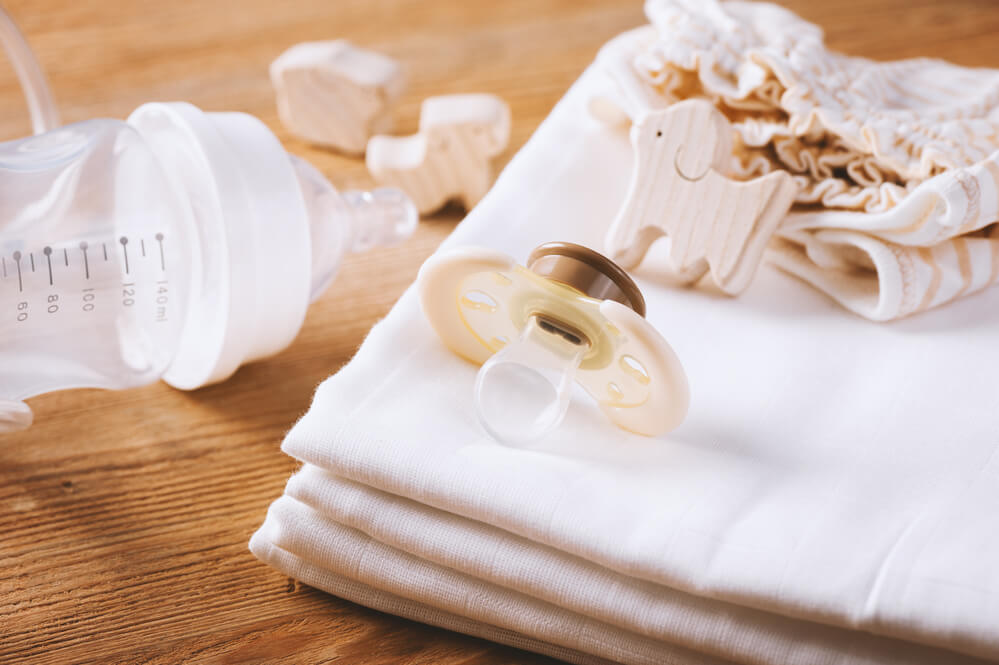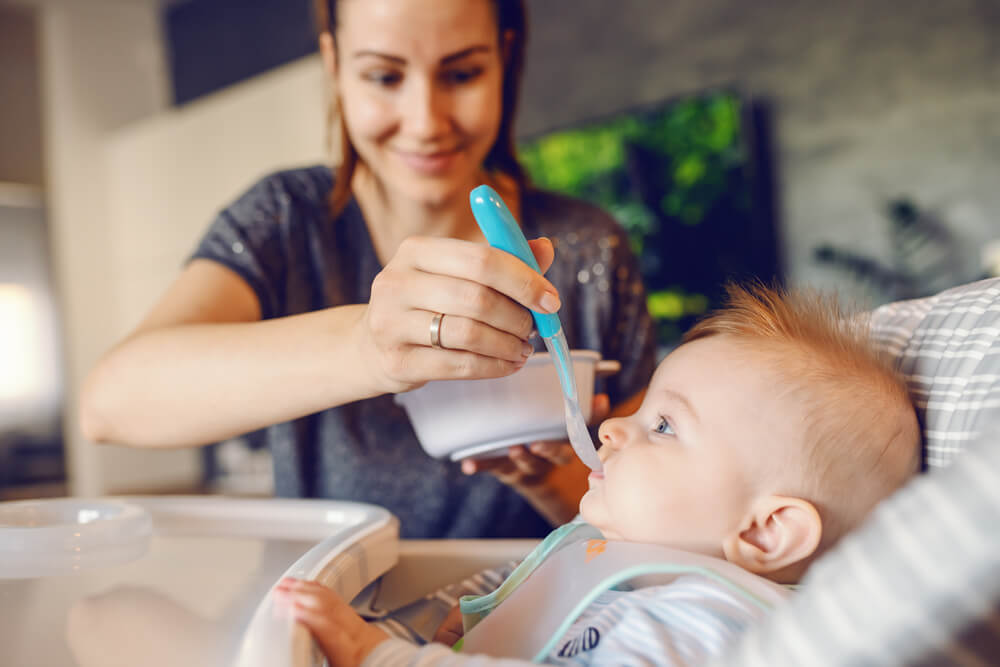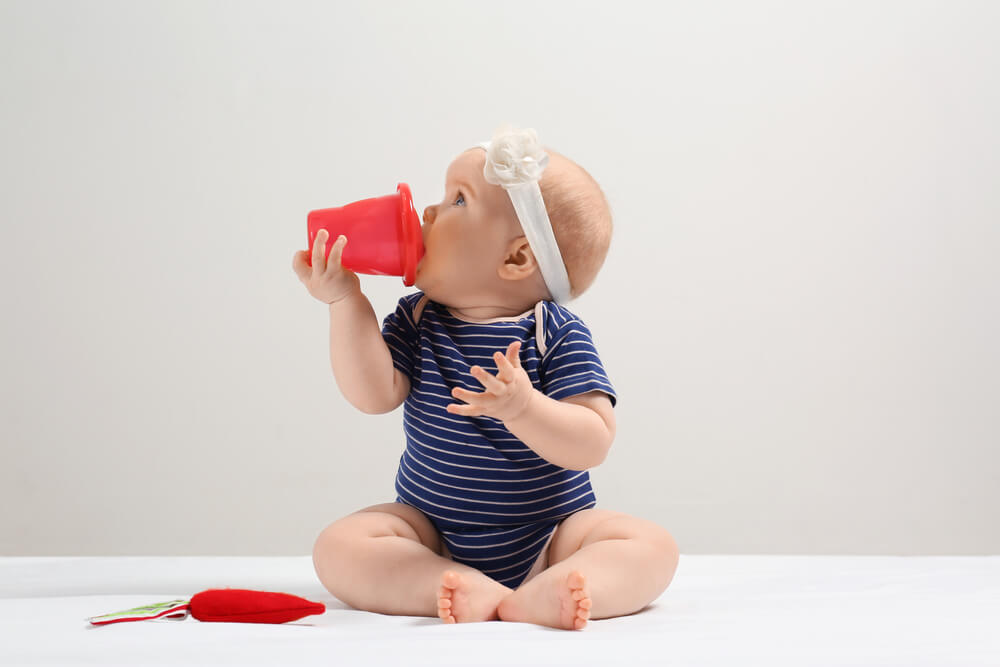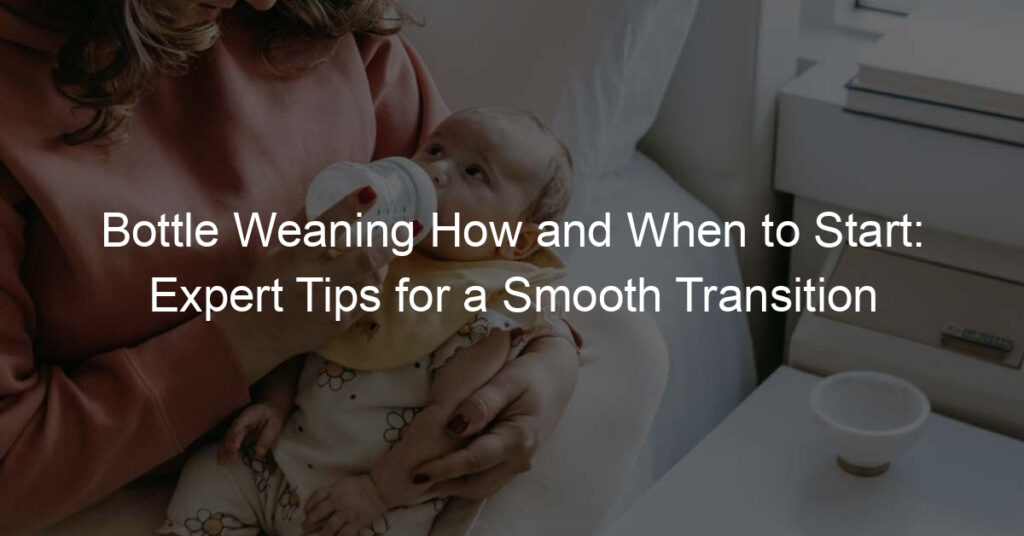Bottle weaning is an essential step in a child’s development, as it marks the transition from reliance on a bottle to drinking from a cup. It’s a process that can be both exciting and challenging for both the baby and the parents.
Understanding bottle weaning how and when to start is crucial for their nutritional growth and overall health.
The process of bottle weaning may vary from one child to another as each child develops at their own pace. Therefore, it is essential to be aware of the signs indicating that your baby is ready to take this step and implement a method that works best for them.
Moreover, anticipating potential issues and providing a smooth transition during this period can make the process easier for the entire family.
Key Takeaways
- Bottle weaning is an important milestone in a child’s development, leading to improved nutrition and overall health.
- It is crucial to recognize when your baby is ready for weaning and implement a suitable strategy.
- Anticipating potential issues and ensuring a smooth transition can make the process easier for both the baby and the parents.
Understanding Bottle Weaning

Bottle weaning is the process of transitioning a baby from drinking milk or formula from a bottle to consuming food and drinks through other methods such as a sippy cup, straw, or utensils. As a parent, I know the challenges and importance of this stage in a child’s development.
The ideal time to start bottle weaning is when the baby is around 12 months old. At this age, most babies are ready to switch from a bottle to a cup and begin consuming more solid foods. However, every child is different, and some may be ready earlier or later than this suggested timeline.
During the initial stages of bottle weaning, it’s essential to take it slow and be patient with the baby’s progress. I remember the first time I started weaning my child off the bottle. I gradually reduced the number of bottle feedings per day and offered a sippy cup with water or milk instead.
It’s crucial to practice persistence, as the baby may resist at first but will eventually adapt to the new method of eating and drinking.
One important aspect to consider during bottle weaning is the baby’s nutrition. As a conscious parent, I made sure the baby consumed enough milk or formula for adequate growth and development.
This might require more frequent feedings as the baby is transitioning to solid foods.
Lastly, remember to offer positive reinforcement and encouragement throughout the bottle-weaning process. This will help the baby feel confident about trying new foods and drinking from a cup. It can be a slow journey, but eventually, the baby will master the art of eating and drinking independently, and you’ll rejoice at their progress.
Bottle Weaning How and When to Start
I believe it’s important to start bottle weaning at the right time, keeping in mind the recommendations from the American Academy of Pediatrics. As a conscientious parent, taking advice from your pediatrician and observing your baby’s individual needs are crucial steps in determining when to begin bottle weaning.
Usually, the process can begin when the child is around 12 months of age. At this stage, the baby’s development is at a point where they can transition to using a sippy cup or regular cup. However, the exact timing is subjective as every child’s developmental milestones may vary slightly.
To ascertain if it’s the right time to wean, I first observe my baby’s ability to hold and drink from a cup. If they’re showing interest and curiosity in drinking from a cup, it might be an opportune time to start gradually reducing their bottle feedings.
Another aspect to consider is that toddlers above 18 months old may become attached to their bottle as a source of comfort rather than nutrition. This can lead to more of an emotional challenge for both the child and the parent during the weaning process.
So, I prefer to plan the weaning process earlier rather than later.
However, I always make sure to consult my pediatrician before taking any significant steps in changing my baby’s feeding habits. They can provide their expert guidance based on my child’s health, growth, and overall development.
Moreover, they may have additional tips and strategies to facilitate a smoother transition during bottle weaning.
Introducing bottle weaning is an important milestone in a child’s life. By being attentive to your baby’s development, considering recommendations from experts like the American Academy of Pediatrics, and consulting your pediatrician, you can make the process a positive experience for both you and your child.
Preparation for Bottle Weaning

In my experience, preparation is key when it comes to bottle weaning. First, I make sure to introduce my baby to a variety of drinking vessels, such as cups and sippy cups. It’s essential to find one that works well for my child so the transition is smoother.
I try out different styles, such as straw or spout sippy cups, to ensure that my baby adapts well to the change.
When it’s time to begin bottle weaning, I establish a comfortable and consistent environment for my little one. I introduce a routine to help them feel secure, such as feeding in the same location and using a familiar stuffed animal for comfort.
This also allows me to monitor their progress and address any potential issues along the way.
In addition to having a predictable routine, I am mindful to be patient and understanding during this transition. I know that it can be a challenging time for both me and my baby, and consistency plays a vital role. My approach includes gradually reducing the number of bottles offered throughout the day while increasing the use of cups or sippy cups.
I also avoid introducing too many changes at once, such as simultaneously weaning off nighttime feedings, to prevent overwhelming my baby.
Strategies for Bottle Weaning
As a parent, I’ve found that transitioning from bottle feeding to solid foods can be challenging. However, with a little patience and some helpful tips, I’ve been able to make the process smoother for both me and my child.
One of the most effective strategies I’ve used is gradually transitioning to a cup rather than going cold turkey. This involves starting with shorter bottle-feeding sessions and introducing a soft-spout sippy cup or straw cup with water or formula in between.
By making this change slowly, I’ve noticed that it’s been easier for my child to adjust and get used to the idea of not relying on the bottle all the time.
Another thing I’ve found helpful is to make this change during mealtime so that my child associates drinking from a cup with eating solid foods. This can be a great way to reinforce the shift from bottle to cup while also promoting a healthy mealtime routine.
When it comes to solid foods, starting with simple, single-ingredient purees or soft finger foods has been the most successful for us. As my child gets used to these new textures and flavors, I’ve been able to gradually introduce more complex foods, such as mixed-veggie purees or more challenging finger foods.
During the process of transitioning, I’ve made a point to always praise my child for any progress. Acknowledging their efforts and offering encouragement, I believe, has been key in helping them feel confident in their ability to make this change.
To keep things interesting and fun, I’ve also made sure to offer a variety of different foods during this time. By introducing new flavors and textures, I’ve found it’s easier to keep my child engaged and looking forward to mealtime.
Another important aspect of bottle weaning is managing the desire for attention. Sometimes, children may ask for the bottle simply because they miss the one-on-one bonding time they had with their parent or caregiver.
In these instances, I make sure to provide plenty of cuddles, playtime, and attention outside of mealtime to help with this transition.
The key is to be patient and take it one step at a time. Bottle weaning can be a challenging process for both parent and child, but with the right strategies and mindset, it can become a smoother, more enjoyable experience.
Nutritional Aspects to Consider During Bottle Weaning

When I begin the process of bottle weaning, it’s essential to take into account the nutritional aspects that will be affected. As I transition my baby from breast milk or infant formula to solid foods and other beverages, I need to be mindful of their nutrient needs and ensure they are consuming a well-balanced diet.
While breast milk and infant formula provide my baby with the nutrients they require in the early months, introducing solid foods is necessary for their development. When doing so, I must aim to provide my baby with foods rich in iron and calories to support growth and overall health.
Also, I must pay close attention to the type and amount of liquid my baby consumes.
Water is a vital component of the weaning process as it helps to keep my baby hydrated and aids in digestion. As I reduce their intake of breast milk or formula, I should gradually increase the amount of water they consume.
Nevertheless, it is important not to go overboard with water intake as it can fill them up, resulting in a decrease in their appetite for solid food.
Juice may seem like a healthy option, but for a baby being weaned from the bottle, it’s not an ideal choice. Not only is it high in sugar, but it can also diminish their appetite for more nutritious foods.
Therefore, I should avoid introducing juice when my baby starts to consume solid foods.
One important consideration during bottle weaning is the type of milk I choose to introduce. Cow’s milk is a popular choice, but it should be given with caution to babies under a year old. The proteins in cow’s milk can be difficult for my baby’s digestive system, increasing the risk of allergies and nutrient deficiencies.
As I embark on the bottle-weaning journey, it’s crucial to remember that every baby’s experience will be different. By maintaining a balance of solid foods, water, and milk, I can ensure that my baby’s nutrient needs are met during this important transition period.
Potential Issues and Solutions During Bottle Weaning
As I started the bottle-weaning process with my child, I encountered a few potential issues. These concerns can arise during this transition phase, but they can be managed effectively with some solutions.
One issue I encountered was that my child sought comfort from the bottle. To help with this, I offered a soft toy or a soothing blanket as a substitute for the bottle’s comfort. Furthermore, I found it helpful to provide extra attention and reassurance during this challenging time.
Another challenge was that my child was hungry during bottle weaning and needed something to satisfy their appetite. To address this, I introduced healthy snacks, ensuring they were getting enough nutrients throughout the day.
For example, I provided cut fruits, yogurt, or cheese cubes as alternatives.
During the weaning process, I observed my child’s speech development closely, as some kids might experience speech delays due to the extended use of bottles. To support proper speech development, I engaged in interactive games or talk sessions, encouraging my child to practice their language skills.
A common issue that I came across was my child’s resistance to letting go of the bottle. Consistency was vital in such cases. I maintained a routine and gradually reduced the amount of bottle feedings each day.
Offering praise and celebrating their achievements during this process also played a key role in keeping them motivated.
Bottle weaning can bring about various challenges, but with consistency, attention, and alternative sources of comfort, it can be a smooth transition.
Feeding Time and Bedtime Routine After Bottle Weaning

After successfully weaning my baby from the bottle, I found it important to establish a new feeding time and bedtime routine to help them adjust. This process involves replacing the nighttime bottle with a nutritious, age-appropriate meal and incorporating a comforting bedtime ritual.
I began by serving a filling meal for dinner, ensuring my baby’s tummy was satisfied before bedtime. This helps prevent them from feeling hungry and requesting a bottle at night. I also made sure to offer a variety of healthy foods at each mealtime to keep them interested and engaged during feeding.
In addition to adjusting feeding times, I established a new bedtime routine to signal that it’s time to sleep without relying on the bottle. My routine consists of simple, calming activities such as a warm bath, putting on pajamas, and reading a story or singing a gentle song.
I found that consistency is crucial, and maintaining the same rituals every night makes it easier for my baby to understand the transition.
Throughout the process, it’s important to stay patient and empathetic to my baby’s needs. I kept in mind that bottle weaning can be challenging for both the baby and me, and it’s essential to provide comfort and reassurance during this transition.
In conclusion, by carefully adjusting feeding times and implementing a new, comforting bedtime routine, I was able to help my child successfully transition from bottle-feeding to a healthier and more age-appropriate nighttime ritual.
Potential Health Effects of Extended Bottle Use
I want to share some potential health effects of extended bottle use. Prolonging the use of a baby bottle can have a significant impact on a child’s health. Some of these health effects include tooth decay, ear infections, cavities, obesity, and weight gain.
When children use a bottle for an extended period, they are more prone to tooth decay. This can happen because the sugar present in milk or juice sits on the teeth for a long time while the child sips from the bottle, causing bacteria to build up on their teeth. Tooth decay isn’t just a toothache; it can lead to cavities, which require dental treatment.
Another potential health effect of extended bottle use is ear infections. When kids lie down with a bottle, the liquid can accumulate in their ear canals, increasing the risk of ear infections. These infections can cause pain and discomfort and, if left untreated, may lead to severe hearing problems.
Moreover, extended bottle use can contribute to obesity and weight gain in children. When children continue to use bottles past the recommended age, they are more likely to consume excessive amounts of liquid calories that they do not need.
This extra calorie intake can result in weight gain and even obesity if not addressed early on.
Besides the health effects mentioned, children who continue to use bottles can also become sick more often. The bacteria that form on their teeth from prolonged bottle use can travel to other parts of their body, causing sickness.
Further, the act of frequently using a bottle throughout the day may make it difficult for a child to develop a balanced and nutritious diet, leading to poor overall health.
It is essential for parents to understand the potential health effects of extended bottle use and make the transition to cup drinking when their child is developmentally ready for it. Doing so can help prevent tooth decay, ear infections, weight gain, and other health concerns.
Tips for a Smooth Transition from Bottle to Cup

When I first decided to transition my baby from a bottle to a cup, it was a challenging process. However, I discovered some useful tips that helped me make the change smoother and less stressful for both of us.
One of the first things I did was introduce a sippy cup with handles. The handles make it easy for my baby to grip the cup and practice holding it independently. I found that offering a cup with a soft spout and gentle flow was a great way to help my baby gradually get used to the new drinking method without causing spills or frustration.
As my baby became more comfortable with the sippy cup, I started to dilute their milk in the bottle. I began by diluting with a small amount of water and gradually increased the water ratio. This helped my baby become accustomed to a thinner liquid that’s more similar to the consistency of water or juice, which they would drink from the cup.
When transitioning, I made sure to offer both the bottle and the cup during meal times. This gave my child the opportunity to practice using the cup while still enjoying the comfort and familiarity of the bottle.
Over time, as my baby became more proficient with the cup, I gradually reduced the number of bottle feeds until we successfully phased out the bottle entirely.
To make the process more enjoyable and engaging, I selected sippy cups with fun designs and bright colors. This encouraged my child to use the cup more frequently and associate it with a positive experience.
Lastly, I practiced patience and persistence. I knew that transitioning from a bottle to a cup was a significant change for my baby, so I made sure to give them plenty of time to adjust. By staying consistent and supportive throughout the process, we achieved a successful transition.
Remember, these are just my personal tips and experiences, and every baby is different. It’s essential to be patient, reassure your baby, and be ready to make adjustments as needed. Happy weaning!
Frequently Asked Questions
When should I introduce a sippy cup for my baby?
I recommend introducing a sippy cup for your baby between the ages of 6 to 9 months. At this age, babies are usually ready to start drinking from a sippy cup. At first, you may need to help your baby hold the cup, but as their motor skills develop, they will become more independent.
What are the best techniques to wean a baby off the bottle?
To wean a baby off the bottle, I suggest gradually reducing the number of daily bottle feedings and replacing them with sippy cup feedings or small meals of solid foods. Start by swapping one feeding per day, and then increase the number of sippy cup feedings over time. Be patient and supportive during the process, offering praise and encouragement as your baby makes the transition.
At what age is it appropriate to stop night-time bottle feeding?
It is generally appropriate to stop night-time bottle feeding between 6 to 12 months of age, depending on your baby’s individual development and needs. To make the transition smoother, consider gradually reducing the volume of milk in the nighttime bottle or diluting it with water. Be sure to establish a consistent bedtime routine that does not include bottle feeding to help your baby adjust.
How can I transition from bottle to solids for my baby?
To transition from bottle to solids for your baby, I recommend introducing soft, pureed foods or baby cereals around 4 to 6 months of age, depending on your baby’s readiness. Gradually offer more solid foods alongside their bottle or breastmilk intake and start introducing finger foods around 8 to 10 months.
Remember to offer a wide variety of foods to encourage a balanced diet and to better integrate your baby into family meals.
Are there specific sippy cups recommended for bottle weaning?
While there is no one-size-fits-all answer, I suggest opting for a sippy cup with a soft silicone spout or a straw-style cup to ease the transition from bottle to cup. Look for cups that are easy for your baby to hold and are spill-proof to minimize messes.
What are some tips for weaning a baby off the bottle at daycare?
For weaning a baby off the bottle at daycare, I recommend communicating with your daycare provider about your baby’s progress at home and reaching a consensus on the best approach to take. Provide sippy cups to keep at the daycare and ensure the staff understands your baby’s feeding preferences.
Be patient and expect that the process may take longer due to the different environments, but rest assured that your baby will eventually adjust.














